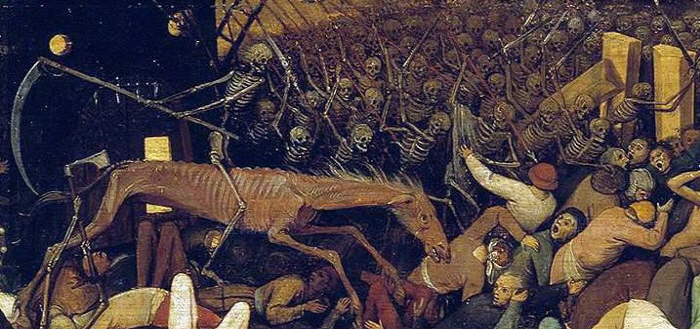
The outbreak of COVID-19 infection that continues from 2020 is said to be an outbreak once in 100 years after the Spanish flu, which spread worldwide from 1918 to 1920. According to a recent study that focused on the Plague of Justinian, which raged in Europe and other countries from 541 to 750, among the recurring pandemics in history, this plague, also called the first pandemic, caused more damage than previously known. I thought of the possibility that it might have happened.
The size of the Justinian epidemic is divided among researchers, and there is also the theory that some of the studies on the effect have only had an effect on the level of influenza in modern society at best. Among historians, the way of thinking that denies the impact of plagues and other plagues on the development of human society is called plague skepticism, and it is said that it has been attracting attention recently.
University of Cambridge historian Peter Sallis conducted a thesis study evaluating the effects of the plague from the results of analysis of old literature and DNA analysis from burial sites. As a result, it turned out that the damage caused by the Justinian epidemic was likely to have been underestimated so far.
Some studies with plague skepticism have argued that there are few records and older documents mentioned in the plague, but Salis denies this. For example, Justinian I, who ruled the Eastern Roman Empire from 527 to 565, wrote a law enacted in 542 for the purpose of rebuilding the imperial economy as a law enacted surrounded by the existence of death spread throughout all regions. At the same time, a number of laws that appear to be caused by the plague were enacted, such as a law to prevent labor exploitation due to a severe human shortage and a law to alleviate the burden of landowners in the face of depopulation due to population decline.
Moreover, under the plague epidemic, light gold coins were issued one after another in the Eastern Roman Empire, which reduced the value of gold coins for the first time in several centuries.
Regarding these historical sources, Salis wrote about the plague’s arrival in Constantinople, apart from his extensive military records, the 6th century historian Procopios, who witnessed the plague firsthand. This is more important than the amount of plague explanation he left behind.
He also points out that a 2018 study that analyzed DNA taken from the remains of the burials showed that the plague, which was prevalent in the Eastern Roman Empire, had spread to England. Most of the remains of the remains of a burial site called Eddyx Hill, Cambridgeshire, were from soldiers, and because the plague DNA found was close to the early strain of Justinian plague, he expressed the view that the epidemic at that time caused great damage in a wide range. In response, Salis says that more genetic evidence will reveal the unexpected. Related information can be found here.


















Add comment